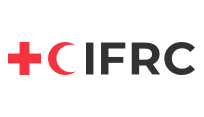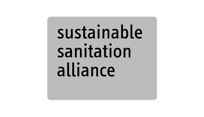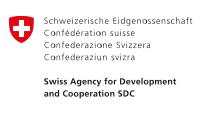Waste prevention is an essential and effective measure within SWM: if waste is not generated in the first place, no effort is required for its management and waste cannot pose a risk to public health or the environment. In addition, resources for waste management can be saved and more attention and action can be invested in the management of the remaining waste.
Waste prevention is highly relevant in both disaster-free settings and in humanitarian responses. It is the first step and highest priority in the principle of waste management hierarchy.
The Waste Management Hierarchy
The principle of the waste management hierarchy is a cascade of generic SWM measures, from most preferred to least preferred (see figure below).
Reduction: whenever possible, waste must be reduced or prevented directly at the source, to decrease the amount of waste that needs further management.
Reuse / Repair: waste that cannot be prevented should be repaired and/or reused, meaning that waste materials are not transformed but reused in their current form.
Recycling / Organic Waste Treatment: if direct reuse is not possible, waste materials should undergo material transformation to create new and valuable goods. This either means recycling (for metals, glass or plastics) or it refers to various treatments for organic materials (T.1 to T.5). Inorganic materials which cannot be recycled, for instance certain plastics can still undergo upcycling T.7 or downcycling T.8 to prevent the need for their disposal.
Energy Recovery: energy can be recovered from organic waste through, for example, biogas production T.3 or making fuel from biomass T.5 and is used for functions such as cooking, lighting and heating.
Disposal: if waste materials cannot be prevented, reused, repaired, recycled or transformed through organic treatment, disposal is the final option. In humanitarian settings, this is either disposal in controlled waste pits U.8 or larger-scale controlled disposal sites or landfills U.9.
Waste Management Hierarchy (adapted from EPA)
The waste management hierarchy can be simplified as the 3Rs of waste management: “Reduce, Reuse, Recycle”. Like the waste management hierarchy, the highest priority of the 3Rs waste management is the reduction of waste followed by reuse and recycling.
Measures to prevent waste take place even before waste is generated. All other steps of the waste management hierarchy come into play once waste has been generated and ideally include waste separation P.2. Without waste separation (either segregation at source or waste sorting at a later stage), reuse or recycling cannot take place. Waste prevention is particularly crucial for non-recyclable and non-biodegradable waste materials. Except for the limited upcycling T.7 and downcycling T.8 possibilities of such waste streams, safe disposal is often the only end-of-life option. Preventing the generation of such wastes directly reduces the amount of residual waste to be disposed of.
Although they eventually end up in the same waste stream, three distinct waste origins can be distinguished in humanitarian settings: waste directly caused by humanitarian organisations and their operations, waste caused by individuals, households or institutions because of their consumption patterns (purchase power, lifestyle and access to markets), and disaster waste W.3. For waste directly generated by humanitarian relief operations W.5, there is higher potential for waste prevention, as organisations have a direct influence on the purchase and management of, for example, relief items and packaging materials. It is more difficult to prevent waste caused independently of humanitarian assistance and may not be possible for humanitarian actors.
Preventing Waste in Humanitarian Assistance
Examples of waste directly caused by humanitarian assistance include:
- Packaging materials from distributed goods and foods such as cardboard boxes, pallet plastic films, plastic bags and plastic strips
- Distributed non-food items which have reached their end of life, such as tents, tarpaulins, cooking sets, lamps or mattresses
- Distributed food items
- Materials used for humanitarian operations such as office equipment, construction materials, chemicals, energy systems or fleet items
Humanitarian organisations have a direct influence on the selection, purchase and management of these different products and materials and can therefore minimise their operational waste creation W.5. This aspect and responsibility have gained increased attention in recent years and can be addressed, amongst others, with the following measures:
Green Procurement: refers to prioritising the purchase of goods and services that have minimal environmental impact. Aspects of green procurement include the prioritisation of products with reduced packaging, products from recycled or sustainable materials, products designed for durability and repairability and products that can be recycled locally. An assessment of the total costs of ownership (which includes disposal costs) or a life-cycle-assessment can help to identify suitable products and facilitate greener procurements. Procurement teams must be engaged in understanding these requirements and incorporate environmental considerations and minimum technical specifications in tender and contract documents. They can also conduct green procurement market analysis and look for opportunities to work with local suppliers to analyse the availability of green goods and services in the market where they operate. This also reduces the need to ship materials which is costly, fuel reliant and time consuming.
Repairability and Take-Back Schemes: ideally, goods used in humanitarian settings are durable and repairable. This is particularly important for items which are distributed to affected communities. Durability and repairability not only extend a product’s lifespan but also prolong the assistance of the goods to affected communities. Take-back schemes refer to measures where end-of-life goods are collected and returned to the supplier; they can be applied to goods directly used by humanitarian organisations or to goods distributed to affected communities. Repairability and take-back schemes are particularly relevant for products which cannot easily be disposed of locally or which contain hazardous materials, such as e-waste from solar lanterns and other electrical and electronic devices W.7. If necessary, take-back schemes for distributed items can also be fostered by providing financial or material incentives if used goods are returned. Take-back schemes can also be connected to in-kind distributions where, for instance, empty food packaging can be returned when picking up new food baskets. Repair and take-back schemes might also be part of voluntary or mandatory Extended Producer Responsibility (EPR) measures of suppliers.
Prevention of Single-Use Items: the distribution of single-use items like plastic cutlery, plates or plastic water bottles should ideally be minimised. Single use items should only be used in the immediate aftermath of events, for instance, during a handout of ready-made food. In such cases, affected communities are likely to have lost their own household appliances and food producers, and the logistics for the distribution of multi-use items (including jerrycans, food containers or cutlery) and food baskets have not yet been set up. Inclusive packaging should be used where possible, such as using buckets as packaging for hygiene kits, pallets as boxes, and tarpaulins repurposed into bags.
Planning and forecasting: stocks should be closely monitored and programme planning and forecasting improved; this will reduce the duplication of purchases and the total number of items entering the waste cycle. Additionally, excessive or unwanted donations should be identified and take-back systems for donations considered if items are unused.
Prevention of Waste from Humanitarian Offices and Facilities: waste prevention can also be applied in humanitarian offices and facilities. It can include reducing paper usage, promoting recycling and composting organic waste from kitchens.
Community relief items acceptance: a thorough needs assessment P.3 should be conducted and the affected community be consulted X.2 to ensure that relief items will be used and will not end up as waste. Organisations that bring in the materials should take full responsibility for the proper management and disposal of their waste.
All humanitarian sectors produce waste within their operations X.7. Some organisations and sectors - especially those involved in food security, nutrition, logistics and shelter – have a greater potential for and responsibility to prevent waste. Waste prevention from humanitarian assistance will likely require inter-sectoral coordination between different humanitarian actors and sectors.
Many of the above measures may be challenging to implement ad-hoc during acute emergencies. However, in the preparedness phase, organisations can integrate them in advance by identifying suppliers of environmentally sustainable relief items, equipping staff with the necessary knowledge and resources and establishing waste reduction strategies for effective implementation.
Preventing Waste from Commercial Goods and Activities
Preventing waste from individuals, households or institutions is far more difficult than waste from humanitarian assistance. The creation of such waste depends on the behaviour of affected communities and individuals, their purchasing power, personal preferences and access to markets. Humanitarian actors have little influence on these factors. Waste prevention from regular consumer goods must be established through national legislation X.1. This can include regulating packaging types, the duty to include mandatory prepaid disposal fees in market prices or enforcing EPR measures for private-sector companies. Waste prevention can also be facilitated by the consumers through conscious consumption and selecting goods with minimal environmental impact – similar to the green procurement of institutions. Neither the introduction and application of legislative frameworks nor the behaviour change of individuals purchasing commercial goods can be significantly changed by humanitarian actors alone, especially within the potentially short timeframes of humanitarian assistance.
Selected References
Green procurement materials in various languages
WREC & Logistics Cluster (2023): Green Procurement Journey Poster
WREC & Logistics Cluster (2024): Green Procurement Market Assessment Toolkit







